Artist Spotlight: Mareike Böhmer
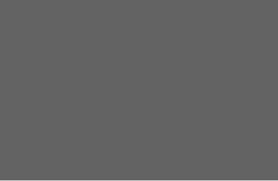
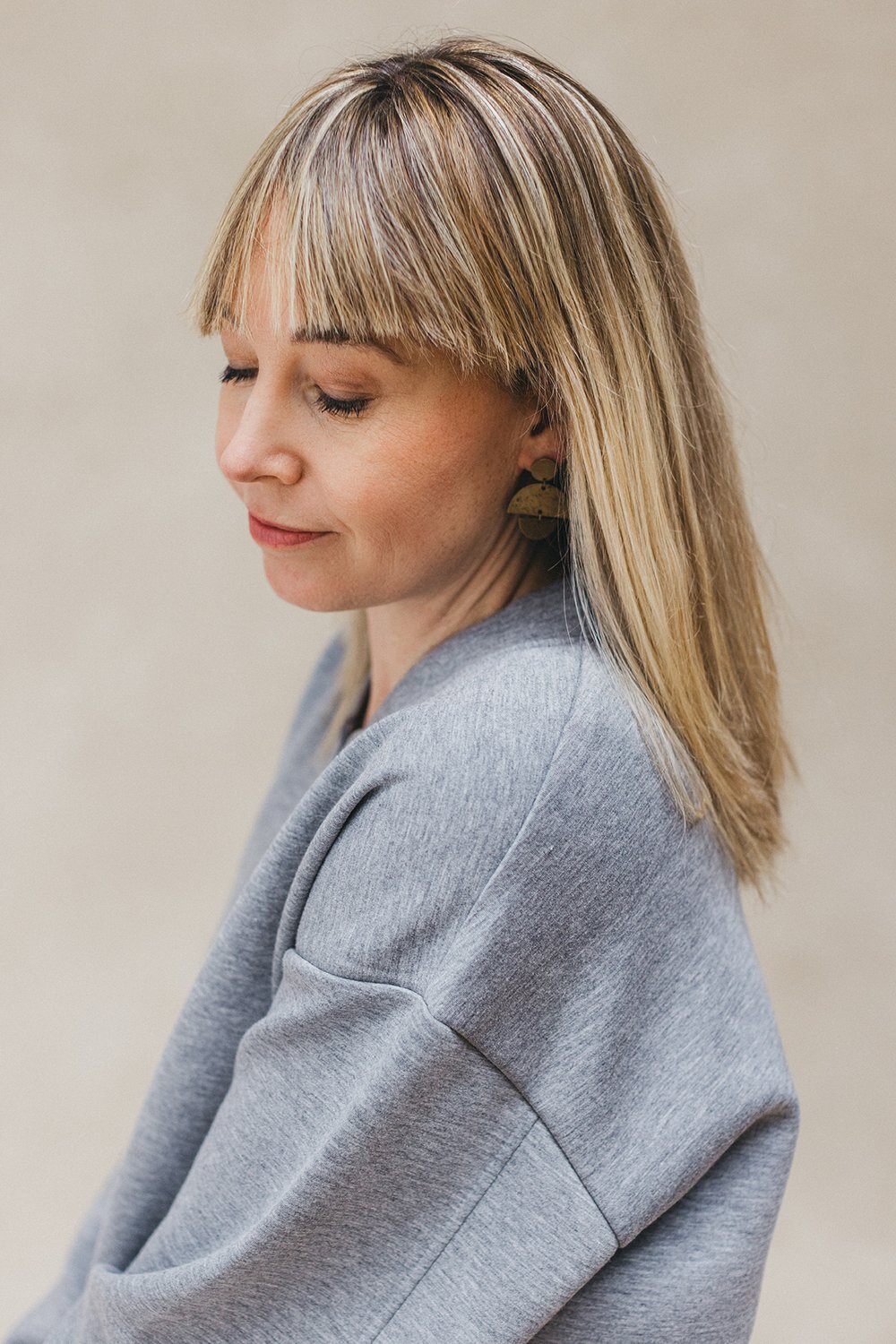
Introducing Mareike Böhmer, a contemporary artist from Germany renowned for her nature photography and abstract graphics. Born and raised in a small village near Frankfurt, her creative journey began in childhood, sparked by a love for painting and a fascination with IKEA catalogs and home decor magazines.
Over the past decade, Mareike's style has evolved from vibrant, geometric designs to a more refined palette, featuring organic shapes influenced by Scandinavian design. Her photography, with its sharp eye for light and composition, often draws inspiration from nature’s subtle beauty, capturing moments of stillness and calm.
Through her work, Mareike beautifully balances the past and present, reflecting on how art can evolve while staying rooted in personal experiences. We caught up with Mareike to dive deeper into her creative process, inspirations, and journey.
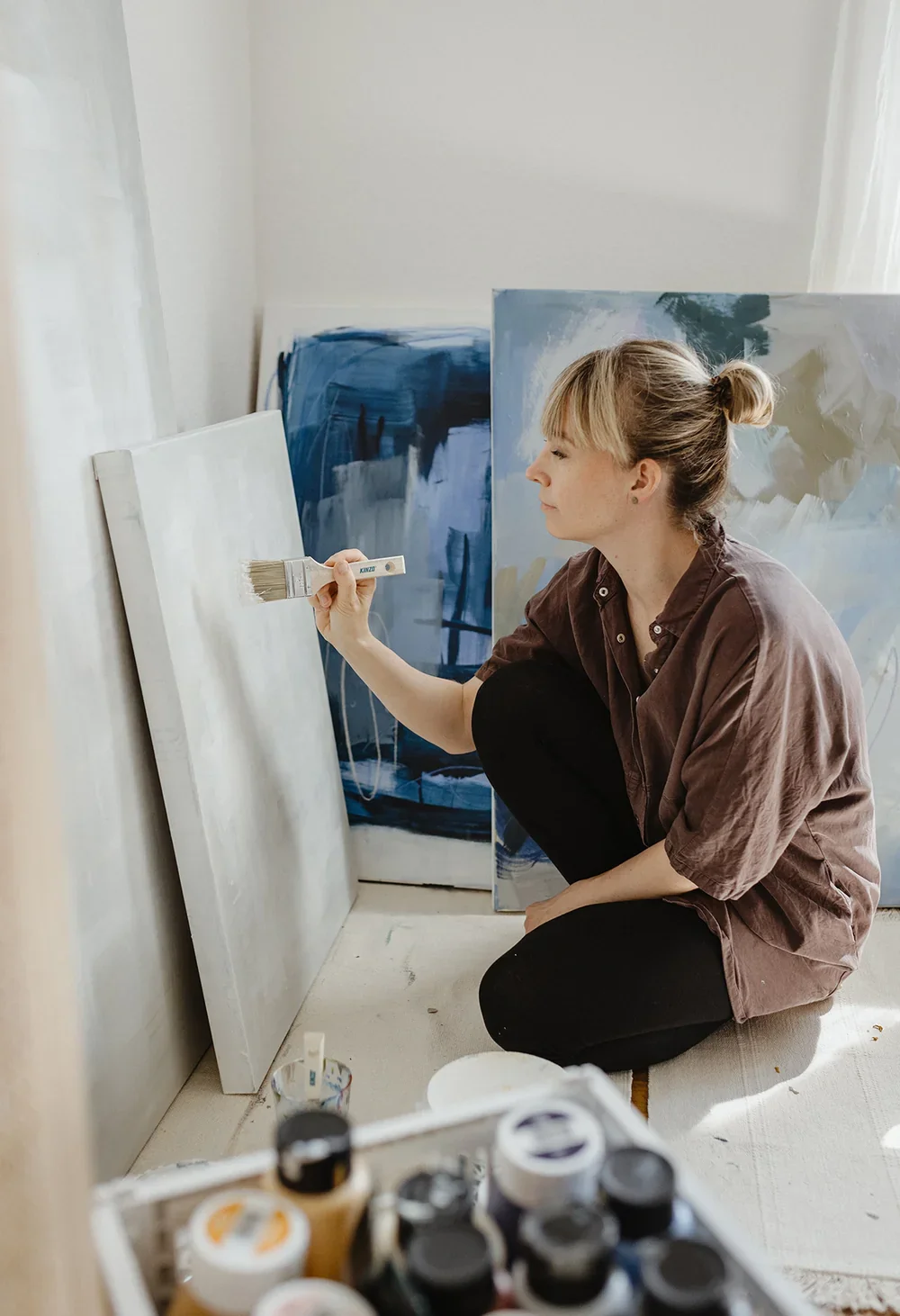
Can you tell us a bit about your childhood and how it influenced your decision to become an artist?
-I grew up in a small village near Frankfurt. I loved painting as a child and became engrossed in the IKEA catalogs and home decor magazines that were lying around our home. Even as a teenager, I enjoyed taking photographs, back then with small digital cameras or an analogue camera from my mother. I used the Paint program to design flyers for our school parties, but becoming an artist was hardly conceivable for me. I did quite well in art class, but one of my teachers didn’t think I had enough talent to study design. As a result, my self-confidence wasn’t particularly high, so I studied media and political science because I thought I wasn’t good enough to study design.
Were there any specific moments or experiences in your early life that sparked your interest in art?
-I did an internship with a friend of my parents’ production company when I was still in school. He was a cameraman and photographer, and she was a painter and editor. I found it all extremely fascinating and inspiring, so I decided to try acrylic painting for the first time. I also became more involved with the camera. Many years later, I undertook a 6-month internship at a website design company where I came into contact with Photoshop, which was like a small revelation.
How did you get started in your artistic career? What were some of the initial challenges you faced?
- After finishing university and my internship in a graphics department, I got a permanent position as a user interface designer. That was a real stroke of luck. At some point I was supposed to create abstract wallpapers and I quickly had a lot of fun working freely with colors and shapes. My fire was lit. At that time I read on a rather nerdy blog that anyone could upload and sell their art on Society6, a shop from the USA. That was at the end of 2012. I did that, just like that, without believing that anything could come of it. But my graphics, which were still very colorful at the time, were so well received that I sold the first pictures after some months.
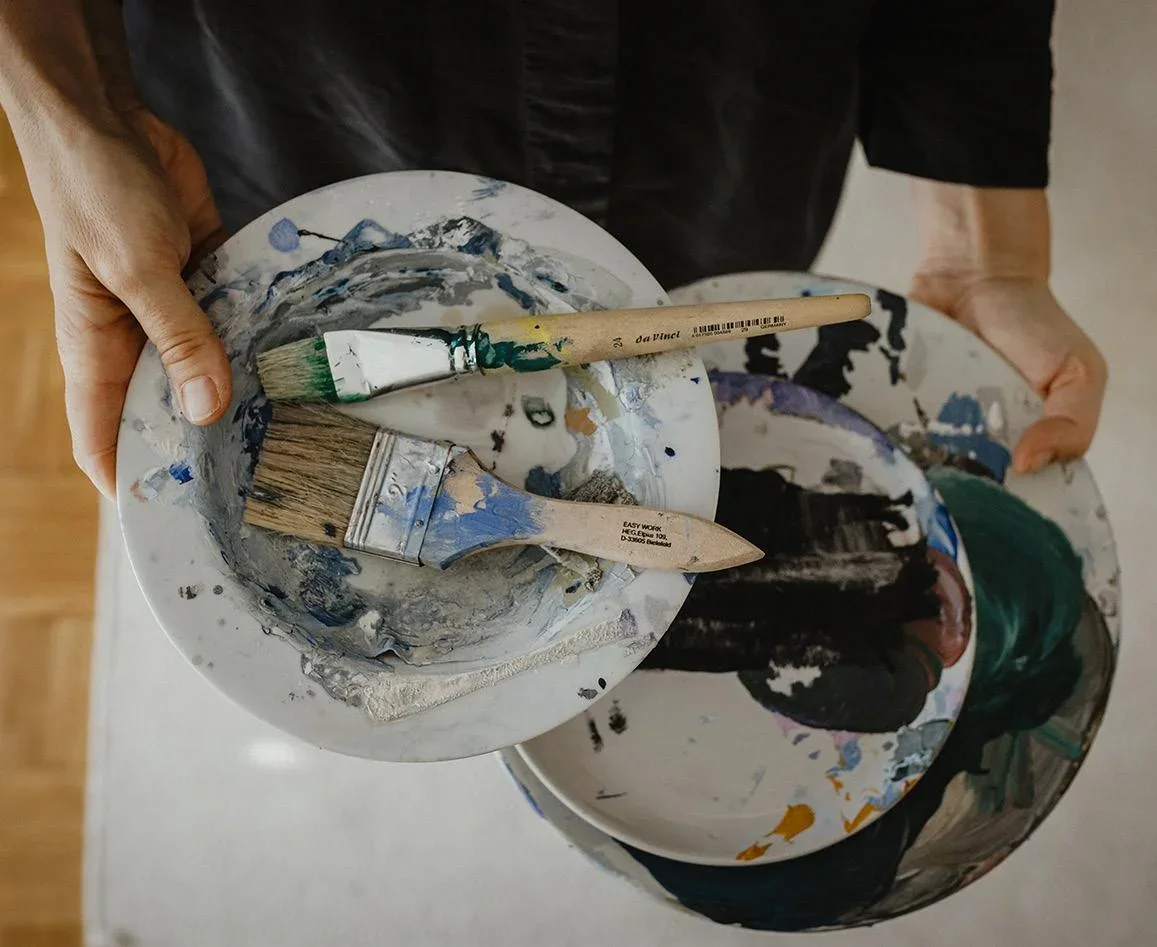
How has your style evolved over the years? Are there any particular phases that stand out to you?
- I’ve been doing all this for more than 10 years now and I’ve developed a lot personally during this time - my style has also changed a lot. I used to be very colorful when it comes to my graphics. Now my color palette is more limited, I’ve noticed which colors I like and which I don’t. My compositions changed from a very geometrical style to softer and organic shapes. I think I was very influenced by Scandinavian design, which I come across again and again on my travels and in interior design magazines. My photographs haven’t changed much stylistically, I’ve always followed more minimalist compositions and loved playing with light.
What was your first big break in the art world, and how did it change your
career?
- A really big thing for me was that I was allowed to sell some pictures at IKEA a few years ago and am still allowed to do so today. The company whose catalogs I studied as a teenager. Another great thing was when one of my artworks was shown in the movie “A Star is Born”, it was hanging over the bed on which Bradley Cooper and Lady Gaga were sitting. A brief appearance of one of my pictures, but I was very proud at the time.
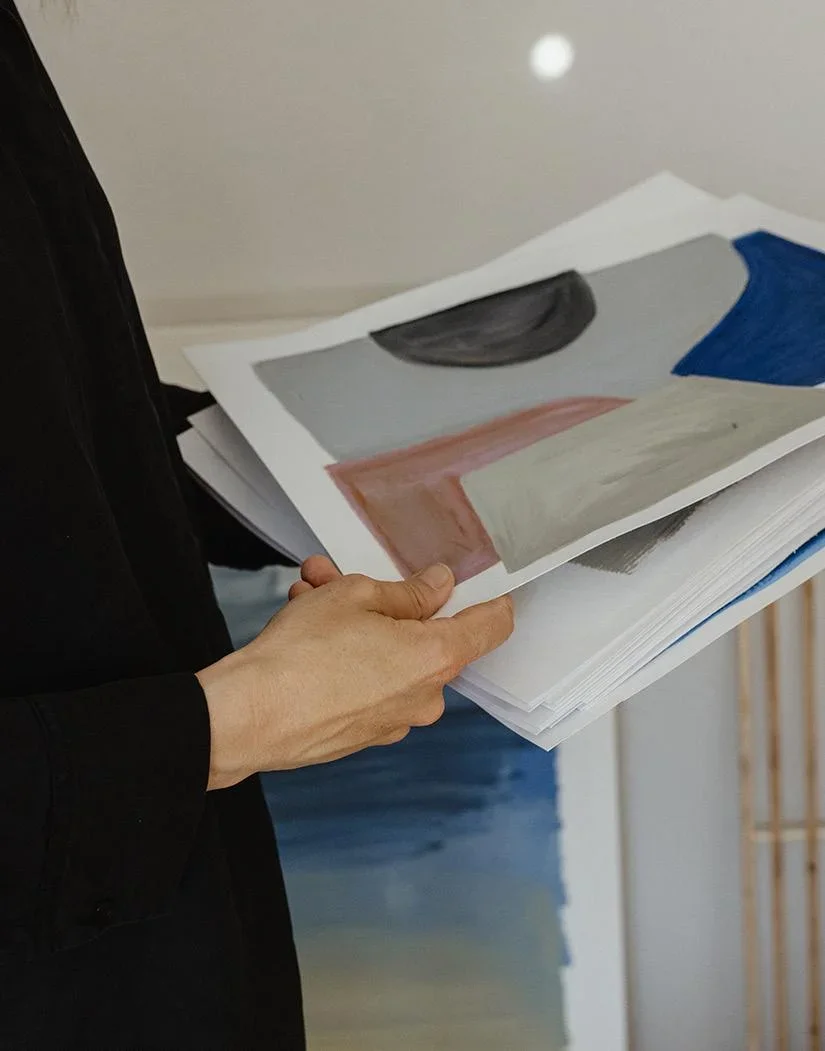
Can you walk us through your creative process? How do you typically approach a new piece of art?
- Today many of my pictures are based on self-painted shapes or textures that I paint with acrylic paints. If I don’t publish these artworks as they were painted,I process them further in Photoshop after I’ve photographed or scanned them I change colors, I combine different layers or add additional handprinted lines. It’s often spontaneous ideas or combinations that I like and then become a final work of art.
How do you stay inspired and motivated, especially during creative blocks?
- I rarely have creative blocks, I would just like to paint and take photos. But of course you have to do a lot of things in between that are part of the business. I always find inspiration in magazines, in nature, in everyday life, but it is so important and increasingly difficult to still stick to yourself and your style, even if you are exposed to different influences all day long.
Who or what are your biggest influences and inspirations in art and life?
- As people, my two children are my biggest inspiration. I admire how uninfluenced they paint and how they combine colors and shapes. Sometimes I wish I could be so free again when it comes to the creative process. Otherwise, I am thoroughly inspired by nature, I love the play of light, shadows and textures, which is reflected in my photography.
Can you describe the themes and messages you aim to convey through your work?
- My abstract pictures have no deeper message, they are intended to spark joy in those who have them at home. My photographs show my love for nature, the little things that surround us and the beautiful landscapes in this world. I hope I can pass this on.
Which of your works are you most proud of, and why?
- I am particularly proud of the images that I created many years ago and that I and many others still enjoy looking at, which have a kind of timelessness. These include my “Graphic 150A”, which was followed by a series of other images with organic shapes. But some pieces from my “Abstract Brush Strokes” collection have also become true classics for me, which I also have hanging at home, such as my picture “Abstract Brush Strokes 15“.
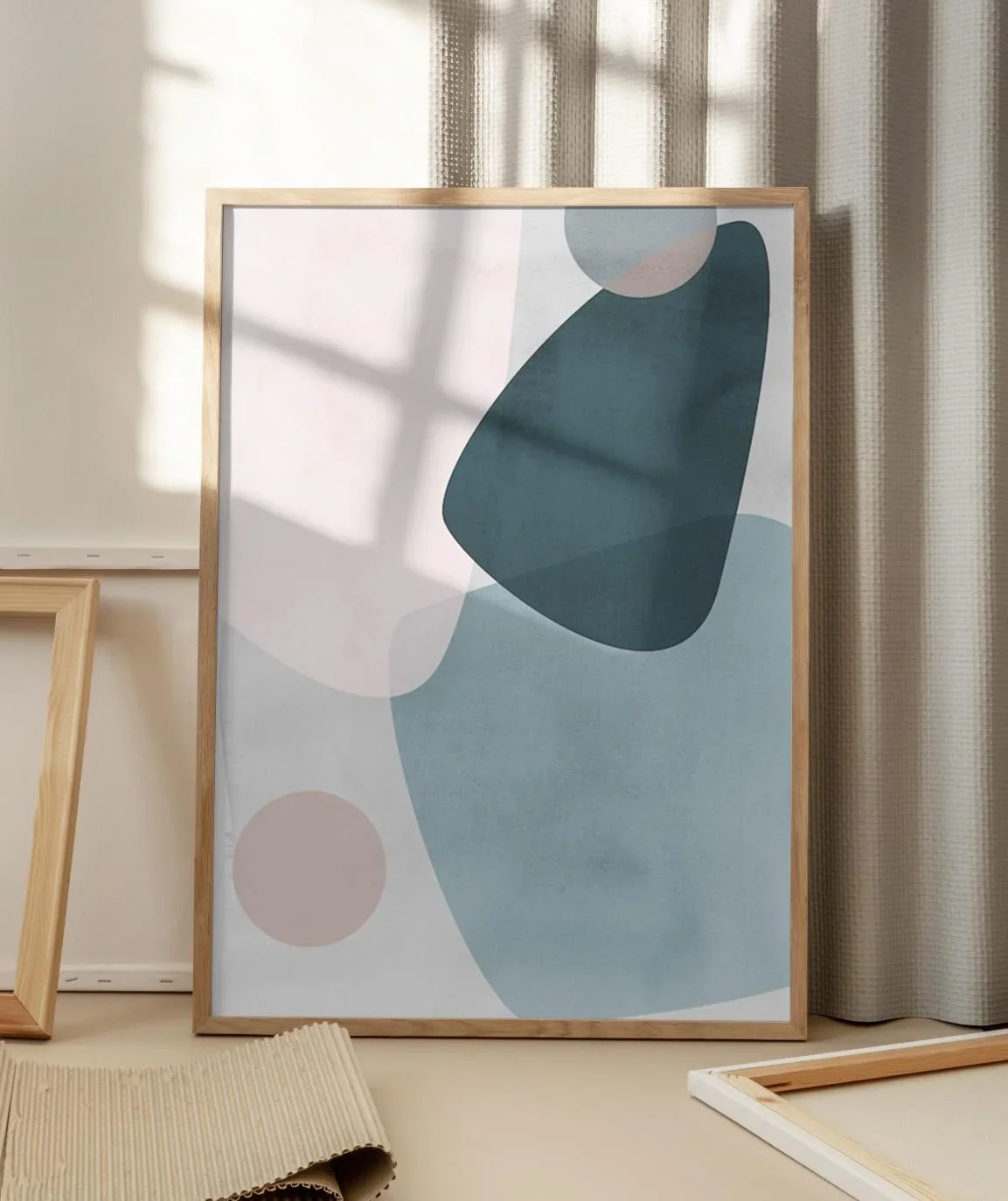
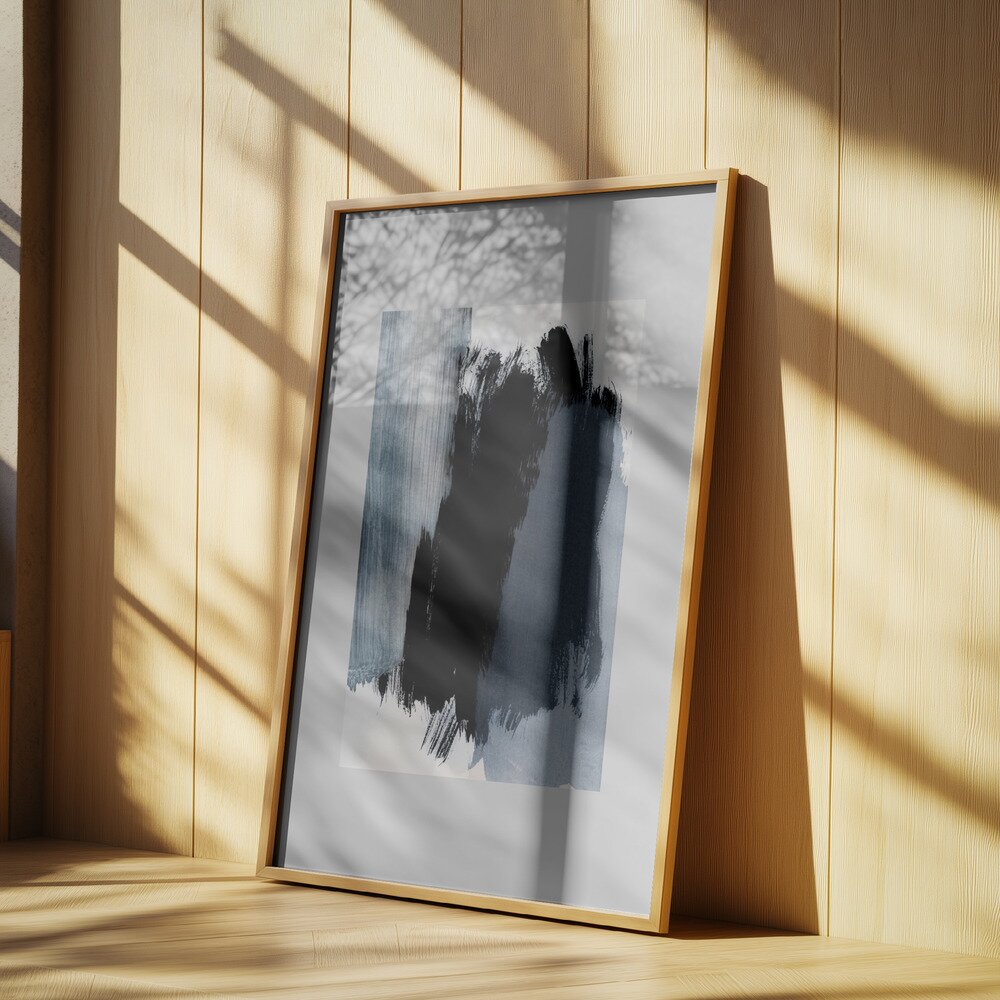
What are your long-term goals as an artist? Where do you see youareer heading in the next few years?
- I am very grateful that I have been able to work as an independent artist for 8 years and I very much hope that this will continue. I’ve been painting a lot of large-format pictures lately, including on canvas, which I also sell as originals in my own shop. This is a very new area for me and I’m just getting started.
What does a typical day in your life look like?
- When my children and my husband are out of the house, I work either in my home studio or in my external office, where other self-employed creatives also work. I usually do what is on my to-do list. Sometimes I have projects with deadlines, but sometimes I also have free phases in which I can think about from day to day how I can and want to be creative. I love this freedom and the mix of different tasks.
How do you maintain a work-life balance, especially as a creative professional?
- I’m lucky that my work is my absolute passion and I don’t have to take a break from work because I’m completely absorbed in it. But I need physical relief when I sit still for too long working on the computer or painting. So I ride my bike a lot, go for walks (usually with my camera) or go swimming.
What advice would you give to aspiring artists who are just starting out?
- This is so difficult, I’m still learning myself. But I think it’s important that you find your own style, that you first do and create things that you really like. And that you always keep going, even if there are setbacks. I always had them too.
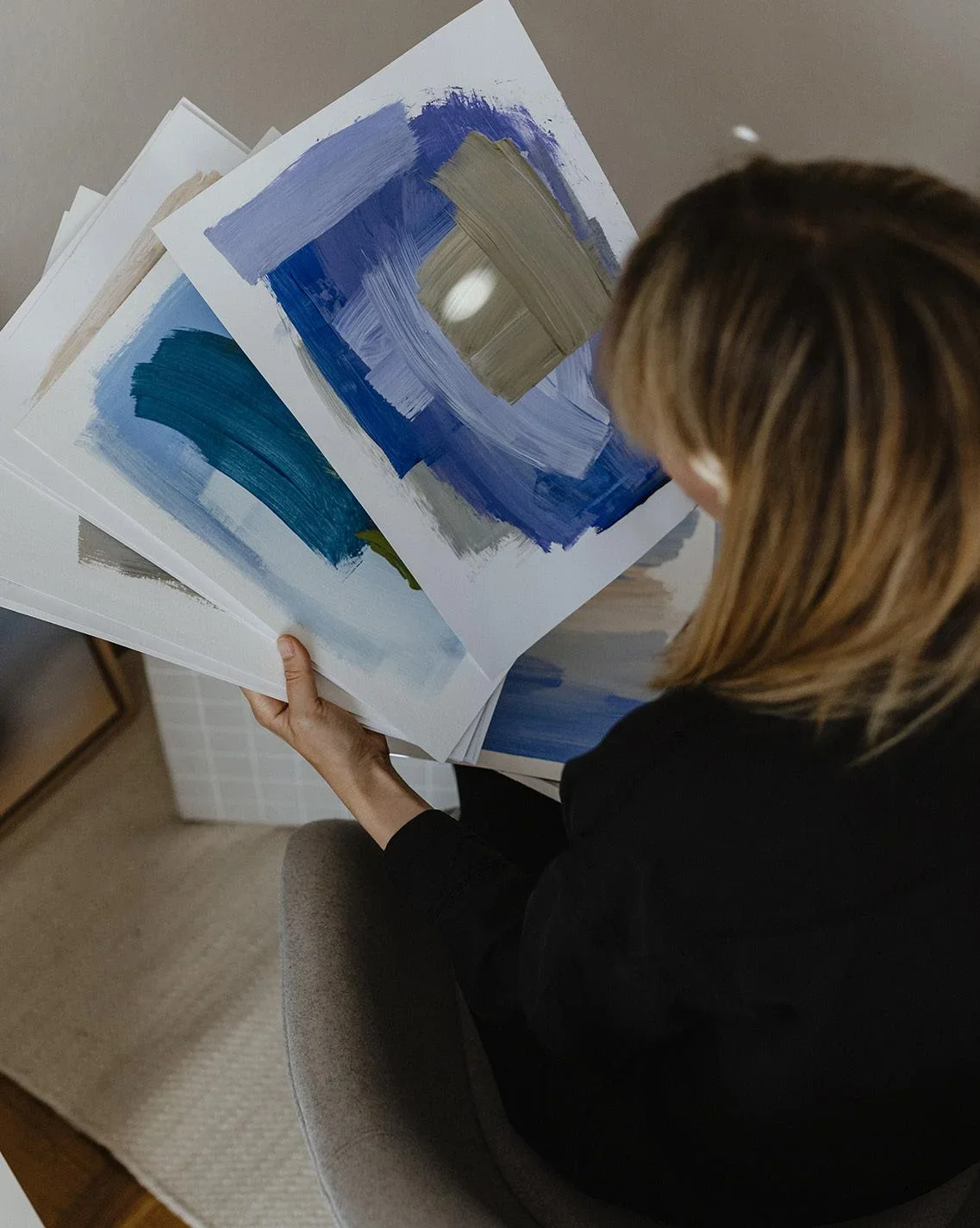
- I could probably write a whole book about this and it's difficult to summarize in just a dew sentences. A few years ago it was easier for me because there weren't many poster shops and comparing them with other's wasn't possible as intensively. Today they are a lot of shops and a lot of pressure on artists to present themselves on social media in order to be seen at all. AI will also change a lot, but I'm trying not to worry to much and move on.
What do you hope people will take away from your art?
- I just want my art to bring long-lasting joy to those who have them in their home.
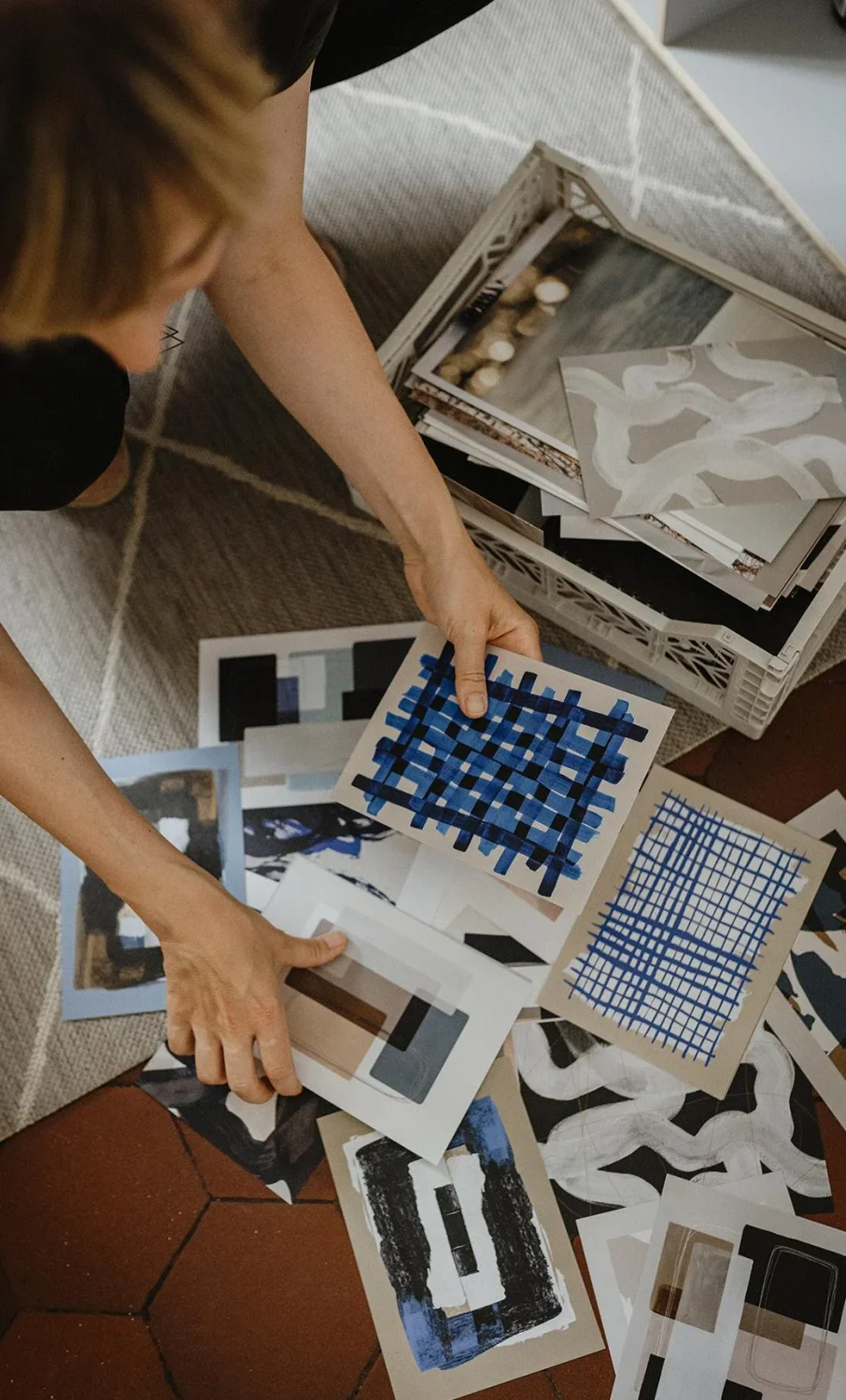
Take a look at her full collection here.




